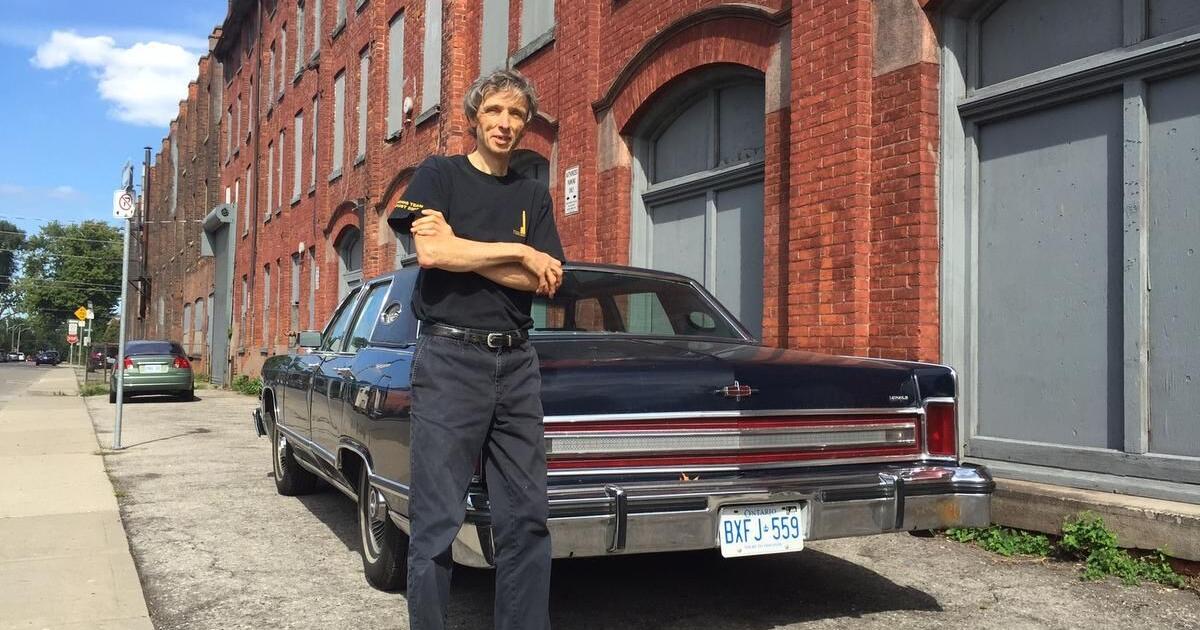Developer Harry Stinson says a revised plan to transform a derelict Hamilton industrial landmark into
condominiums is moving ahead.
“We’ve alive and well,” he said, noting the Beasley Park Lofts could be ready for occupancy in 2024.
When Stinson bought the
Cannon Knitting Mills property for $3 million in 2016, he announced plans for a six-storey condo redevelopment that also included retail space and a hotel.
Two years later, he switched gears, aiming for a 20-storey tower as the centrepiece of the repurposed industrial buildings at Cannon and Mary streets that date to 1854.
Stinson now says he’s shooting for something higher with other developers aiming for 30 storeys and up under the city’s updated downtown secondary plan.
“There is much more acceptance of larger, taller buildings, of density, in downtown than there was five years ago, and this is something that a developer would hope would happen.”
Coun. Jason Farr, meanwhile, is “frustrated” with the pace of Stinson’s project after years of anticipation.
“It’s upsetting to me to see the stagnation of such a great opportunity site,” the Ward 2 councillor said. “And I can tell you that I’m not alone.”
The Beasley Park Lofts is just one of dozens of highrise developments planned or under construction in and around downtown Hamilton.
The “original piece of architecture” next to a “rejuvenated” Beasley Park makes it a “coveted” piece of real estate, Farr said.
“There’s a lot of people who would have loved to have seen something happen a few years ago.”
John Neary, who lives across from the hulking, old, brick complex, is one of them.
Amid a housing crisis, opportunities to increase the supply of units in Hamilton are crucial, he said.
But Neary noted he’s “skeptical” the knitting mills redevelopment will come to fruition soon.
The city should “use every lever in their tool box” to discourage property owners from sitting on
vacant land, he said.
“They should aggressively be pursuing a punitive vacancy tax as hard as they can.”
Stinson says a project of Beasley Park Lofts scale takes about 10 years, noting hurdles for financing, environmental work, and more recently, the COVID-19 pandemic.
As well, developers buy property “in anticipation that there will be more potential in the future,” he added.
“So I don’t think anybody should be surprised that we didn’t buy the land and erect a building the next morning.”
In addition to 450 residential units, the plan includes 150 small commercial and retail spaces at the ground floor.
Those business spaces “just flew off the shelf,” while between 85 per cent and 90 per cent of the condos are sold, Stinson said.
Developer Harry Stinson says a revised plan to transform a derelict Hamilton industrial landmark into
condominiums is moving ahead.
“We’ve alive and well,” he said, noting the Beasley Park Lofts could be ready for occupancy in 2024.
When Stinson bought the
Cannon Knitting Mills property for $3 million in 2016, he announced plans for a six-storey condo redevelopment that also included retail space and a hotel.
Two years later, he switched gears, aiming for a 20-storey tower as the centrepiece of the repurposed industrial buildings at Cannon and Mary streets that date to 1854.
Stinson now says he’s shooting for something higher with other developers aiming for 30 storeys and up under the city’s updated downtown secondary plan.
“There is much more acceptance of larger, taller buildings, of density, in downtown than there was five years ago, and this is something that a developer would hope would happen.”
Coun. Jason Farr, meanwhile, is “frustrated” with the pace of Stinson’s project after years of anticipation.
“It’s upsetting to me to see the stagnation of such a great opportunity site,” the Ward 2 councillor said. “And I can tell you that I’m not alone.”
The Beasley Park Lofts is just one of dozens of highrise developments planned or under construction in and around downtown Hamilton.
The “original piece of architecture” next to a “rejuvenated” Beasley Park makes it a “coveted” piece of real estate, Farr said.
“There’s a lot of people who would have loved to have seen something happen a few years ago.”
John Neary, who lives across from the hulking, old, brick complex, is one of them.
Amid a housing crisis, opportunities to increase the supply of units in Hamilton are crucial, he said.
But Neary noted he’s “skeptical” the knitting mills redevelopment will come to fruition soon.
The city should “use every lever in their tool box” to discourage property owners from sitting on
vacant land, he said.
“They should aggressively be pursuing a punitive vacancy tax as hard as they can.”
Stinson says a project of Beasley Park Lofts scale takes about 10 years, noting hurdles for financing, environmental work, and more recently, the COVID-19 pandemic.
As well, developers buy property “in anticipation that there will be more potential in the future,” he added.
“So I don’t think anybody should be surprised that we didn’t buy the land and erect a building the next morning.”
In addition to 450 residential units, the plan includes 150 small commercial and retail spaces at the ground floor.
Those business spaces “just flew off the shelf,” while between 85 per cent and 90 per cent of the condos are sold, Stinson said.
 stinsonproperties.com
stinsonproperties.com







